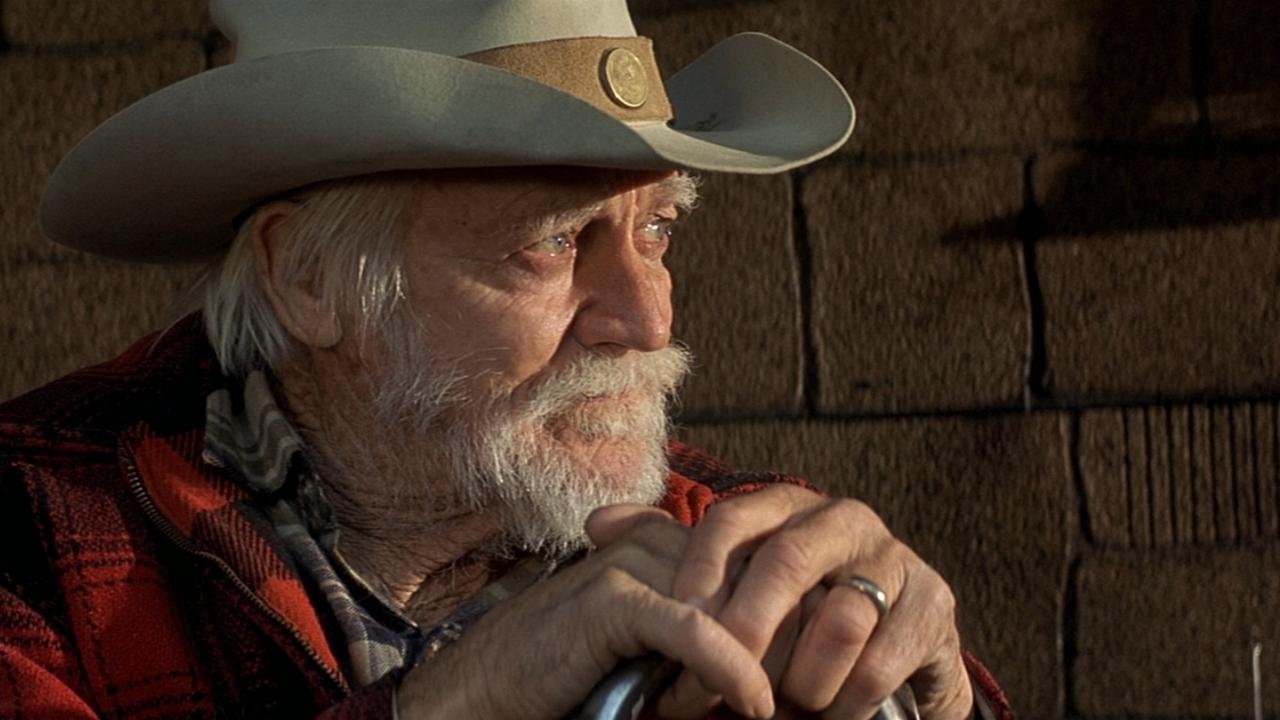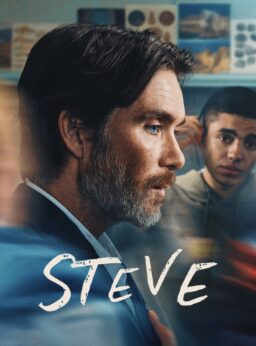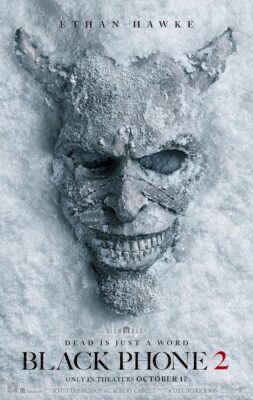I stayed away from David Lynch’s filmography for a long time. The assumption was that his work would dig under my skin, restless and unsettling. My first experience watching his work was accidental. My husband and I used to have opposing work schedules, and he’d get home and press play on new episodes of “Twin Peaks: The Return” after his shift ended near midnight. One night, plagued with energy, I sat up with him and witnessed a moment in the episode “Wake Up, Don’t Die” where a young boy is mowed down by a car and then watched as his mother held his broken body and wailed.
The moment added another few years to my waiting game, reluctant to deal with those emotions that I couldn’t shake, the images seared into the back of my eyelids. In ensuing weeks, I’d listen from bed as the music by Nine Inch Nails and the sound of atomic bombs thrummed from the television as he watched “The Water & The Well.” This was a series, a director, so clearly revered, so notably important, yet here I was missing out.
My relationship to the work of David Lynch fundamentally changed with “The Straight Story.” Some might call me a “sensitive type.” Not so much heart-on-her-sleeve and more that the dead raccoon on the side of the road makes me instantly weepy. I harbor the unfortunate character trait of carrying emotions with me long past the initial moment they’re expressed.
There’s something to be said about waiting until you’re ready for specific pieces of film and television—ready for the discomfort, the discussions, the overall analysis. “The Straight Story” isn’t the first Lynch film I watched, but it’s the one I most frequently return to. Discovering films and filmmakers at your own pace offers revelatory, emotional experiences that come from watching a terrific, life-changing film when you’re ready to receive it.
I long knew that the work of David Lynch would eviscerate me. From the depiction of callous human nature to the corner-of-your-eye scares, his fiction intimidates. Little did I know that the greatest weapon in his arsenal to affect me was his abundance of compassion. For a long time, I assumed “Mulholland Drive,” the first film of his I watched, would remain my favorite. With its bombastic, highly stylized sequences, its emotional catharsis, and lush, noir aesthetic, it was riveting in a manner that speaks to my tastes. Then I saw “Blue Velvet” and while taking in the youthful, traumatized eyes of Kyle MacLachlan as vagrants taunted him, threatening violence, I realized that those emotional stakes were present in most of Lynch’s work. Both films contained the depravity of human nature—the ugly, insidious underbelly of the world—but they found humanity buried in the gutters.
“Dune” earned the hallowed badge of being one of those films experienced by watching live across servers with friends during the lockdown. “Eraserhead” needled yet wowed; “The Elephant Man,” obviously impressed; “Lost Highway” wasn’t for me. Then, “The Straight Story” provided eternal hope for our capacity to heal.

One of the best discoveries about Lynch is his persistent testing of audiences’ patience and the different methods that spring forth from it, from who killed Laura Palmer to the indescribable sonic panic attack of “Eraserhead.” “The Straight Story” does it simply by stripping it down. Methodical, linear, and in constant, glacial motion.
A peculiarity amongst a career of oddities, “The Straight Story” weaponizes compassion to wound those among us with tender, bleeding hearts. Celebrating its 25th anniversary this year, the film follows retiree Alvin Straight. Upon learning that Lyle (Henry Dean Stanton), his estranged brother, has suffered a stroke, he decides to visit him, embarking on a journey across Iowa and Wisconsin on a lawn mower due to poor eyesight and general health keeping him from driving.
There’s so much to love about “The Straight Story.” Richard Farnsworth delivers an endlessly compelling performance as a man whose stature would suggest stoicism but which belies the truth of his compassionate, emotionally open demeanor. The performance offers a combination of wide-eyed wonder and the heaviness of a hard-worn life. The score by longtime Lynch collaborator Angelo Badalamenti swells with an Americana gait and tonality, haunting yet liberating in equal measure. The score plus the cinematography by Freddie Francis emphasizes the natural beauty of these oft-forgotten pockets of the country, combing the earth for its spirituality, capturing the way the light hits as Alvin embarks on his journey.
Told linearly and shot chronologically in the order of the real Alvin Straight’s actual travel route, “The Straight Story” isn’t so far removed from the playfulness of other Lynch works—the smash cut of Alvin’s face when his brakes don’t work, the woman in hysterics over her contribution to an interstate graveyard of deer. But, maybe more crucially, this sincere and earnest nature isn’t specific to just “The Straight Story.” Lynch’s career, despite often playing in plains of parody, is enriched by sincere, blatant emotions—even the most uncomfortable ones. Grief in particular gets a highlight, and while there’s more kindness and light in his 1999 film, this feeling underpins it. The grief of what if’s, grief over Rosie (Sissy Spacek) losing the right to raise her children, the grief of Farnsworth dealing with the significant health issues that were written into the film, grief over the loss of bodily autonomy as we age. “The worst part about getting old is remembering when you was young” Alvin says, and his voice aches with melancholy.
While the film is the narrative embodiment of “it’s about the journey not the destination,” ironically the destination is enormously pivotal in the emotional triumph of “The Straight Story.” Lyle looks at this brother, bewildered and moved, saying: “Did you ride that thing all the way out here to see me?”
The scene lets silence and two formidable actors weaponize the face’s greatest tool, their eyes, to distil a decade of character growth into a single scene. We feel the regret, and while we don’t get to know what comes after their reconciliation, Alvin’s actions lay it all out.

There’s such an abundance of empathy. We see it in how people approach Alvin, like the man who is so moved by Alvin’s story that he offers to drive him the rest of the way to his brother’s after his lawn mower breaks down. It’s the enriching manner in which small town suburbia is depicted, the camera fascinated with all facets of life.
But mainly we see it in how Alvin treats those around him, notably in a night under the stars with a runaway girl seeking refuge near his fire. Alvin Straight displays constant consideration and compassion. There’s an unspoken perseverance, a silent pride of a man of a certain generation. He can’t do anything about the past, but he can move forward; he can keep living even as his means continue to diminish. That benevolence and celebration of the human spirit is integral to what makes “The Straight Story” so impactful.
In a way, I was right about my assumption that Lynch’s works would deeply unsettle me. I still close my eyes when the “bum” behind the diner jumps out in “Mulholland Drive,” and Bob’s first appearance in “Twin Peaks” makes me shiver out of my skin. However, I still underestimated the emotional depth of Lynch’s works.
It’s why the scene at Club Silencio in “Mulholland Drive,” as Rebekah Del Rio sings “Crying,” does such a number on me. I’m an empathy sponge, here to feel. Lynch’s work—unruly, nonsensical, voyeuristic, and cruel—extends enough compassion and just enough unsatiated emotion to make those moments of horror, hardship, and mystery land. I may not be sure why Audrey (Sherilyn Fenn) begins weeping in episode six of “Twin Peaks,” but her tears and Leland’s (Ray Wise) staccato solo dance wreak havoc anyway.
It’s why in “The Straight Story” the sequence in the bar between Alvin and Verlyn (Wiley Harker) cuts deep with unrepentant grief. In a scene with such unfathomable empathy for its characters—for the elderly so often forgotten and dismissed in today’s world—Lynch allows patience. The two men, both veterans, trade stories about their days in World War II. Verlyn openly cries at the bar, while Alvin holds a glass of milk, having quit drinking. They’ve lived on and they feel without forgetting. They lived while their comrades, just boys, didn’t, so they mourn.
Our capacity to heal even when the finite nature of our mortal selves is so evident in the foreground is a theme tackled with grace in “The Straight Story.” Alvin might not be able to drive or walk without the assistance of his canes, but what right does that have to strip him of his ability to change?
For a while, a discourse would pop up every so often about whether a film critic needed to study film history to be a critic. Those who argued that yes, obviously, critics should study the form they’re writing about were called elitists—that not everyone could afford to study film and criticism, especially in a field with constantly diminishing returns. The finer point was missed. You can learn about film from the confines of your home. I’m greedy; I want to know more and am furious with envy of those who do. There’s an itching, imposter syndrome that infects us—me—and it’s difficult to wrestle with watching a film at the right time and watching one simply to be seen as legitimate.
I’m an emotional moviegoer. Most of us are. A particular song played one day can do little, yet reduce me to tears the next. So, while I believe wholeheartedly that to hang your name on the word “critic” means studying film history well beyond the ’90s, I think there’s wiggle room on where that journey starts and how it paces itself.
I want to know more. I want to feel more. But what I’ve tried to avoid is consuming for the sake of consumption; I want to get something out of the films I’m watching, and sometimes, that means waiting until I’m at the right place, in the right moment, to watch and grapple with a film and its tone. I’m 32, and this career stands flimsy beneath my footing. My peers are full of encyclopedic knowledge—they master prose that bridges the scholarly with personal, the tangible with the untenable. Meanwhile, I’m always catching up on something. My apartment, my life, is brimming with lists upon lists. This past year, it’s been the works of David Lynch and, of all things, the overwhelmingly lengthy anime series “One Piece.” I want to know more, and more, and more. The films and stories that stuck and make up every inch of me tended to be viewed in the perfect places at the perfect times, whether that be in a darkened theater in Boston or a loft apartment at night with the windows blown open to let the dewy, early summer New England air settle in.
Maybe I’d always be destined to be moved by “The Straight Story,” but the profound effect it had on me, that “only so many times in a lifetime” shift of view was achievable now because of who I am, how I feel, what I’ve seen, and when. Maybe Alvin could have ventured out earlier to reconnect with Lyle. Maybe there were easier methods he might’ve taken to get there. But what matters, in the end, is that he took that step, then another.











